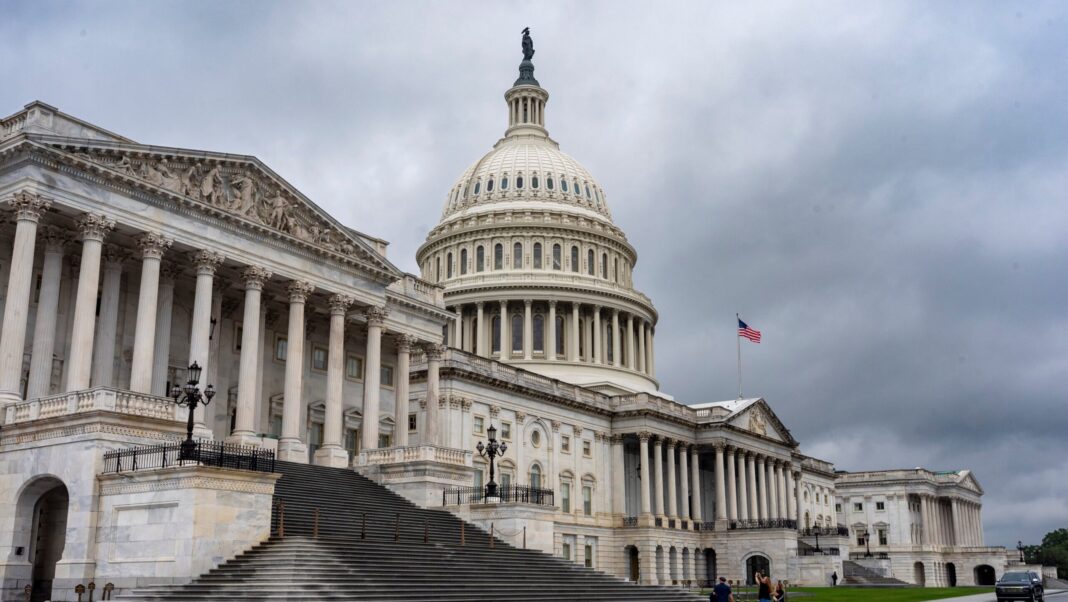The Impending Government Shutdown: A Showdown Between Political Giants
As the clock ticks down to Tuesday night, Democratic and Republican congressional leaders are headed to the White House for a critical meeting with President Donald Trump. This gathering symbolizes a last-ditch effort to avert a government shutdown, but thus far, both sides showcase a lack of willingness to compromise. With entrenched positions and significant stakes, the outcome remains uncertain.
The Stakes of a Government Shutdown
If Congress fails to pass funding legislation by the looming deadline, numerous government offices across the country are poised to temporarily close. Nonexempt federal employees would face furloughs, creating an added strain not just on their livelihoods but on the broader economy. Such shutdowns have historically triggered public discontent, leading to blame largely placed on the party in power—in this case, the Republicans.
Diverging Political Strategies
Republicans are pushing Democrats to vote on a funding bill that maintains current levels of government spending. They perceive this as a tactical move, daring their opponents to oppose legislation that they argue is necessary for keeping the government running. Conversely, Democrats see this as an opportunity to leverage one of their few remaining cards: the demand for health care legislation that extends benefits needed by millions.
Senate Democratic leader Chuck Schumer articulated the urgency, declaring that “the meeting is a first step… We need a serious negotiation.” His remarks underscore the precariousness of bipartisan dialogue, suggesting that while the meeting signifies progress, it’s merely the beginning of what promises to be a protracted negotiation.
Trump’s Stance and the Pressure to Negotiate
Despite agreeing to the meeting, Trump’s approach has been largely dismissive of Democratic demands, particularly concerning health care reforms. He has made it clear in statements that he anticipates a government shutdown may be unavoidable. “If it has to shut down, it’ll have to shut down,” he asserted, shifting blame onto the Democrats. His administration has warned of dire consequences, including permanent layoffs for federal employees, aiming to pressure Democrats into ceding ground.
Republican Senate Majority Leader John Thune echoed the urgency of avoiding a shutdown, emphasizing the detrimental effects it could have on the American populace. Yet, the administration’s tough talk may reflect an underlying concern—pressure is building for both parties to find common ground before it’s too late.
Health Care Legislation: A Key Battlefield
Central to the Democrats’ strategy is the push for an extension of Affordable Care Act tax credits that significantly impact millions of low- and middle-income Americans. These credits, designed to expand coverage, are set to expire shortly, adding another layer of urgency to the negotiations. While some Republicans express a willingness to discuss extending these benefits, they simultaneously advocate for reforms, seeking to address perceived issues of “waste, fraud, and abuse.”
This creates a dichotomy within negotiations, as Democrats must navigate their demands without losing the essential funding bills that keep the government afloat. Schumer has emphasized that the stakes are high, stating that voters expect assistance with health care amidst the looming threat of job losses.
The Political Tightrope
The delicate choreography of bipartisan negotiations often leaves lawmakers balancing precariously between political principles and the pragmatic need for governance. Should Senate Democrats choose to vote against the short-term funding bill—set to keep the government funded for another seven weeks—they risk backlash from constituents who oppose shutdowns. This scenario puts them in a difficult position, one that could have lasting ramifications for party cohesion and public perception.
Past experiences linger in the minds of lawmakers. Schumer faced fierce backlash after voting to advance a Republican-led funding bill during a previous standoff, and as a result, he is proceeding with more caution this time.
The Uncertain Path Ahead
As the meeting approaches, the potential dynamics between Trump and congressional leaders are unclear. Historical context suggests that negotiations under this administration haven’t thrived, with Trump’s earlier interactions being marked by hostility. Notably, a previous negotiation attempt culminated in the President harshly dismissing Schumer, setting a tense precedent.
In light of their differing priorities and previous tumultuous interactions, it remains to be seen whether this meeting will pave the way toward a resolution or further entrench partisan divides. The outcome is pivotal—not only for this moment of crisis but for the broader implications it holds for future governance and political strategies in an increasingly polarized landscape.



